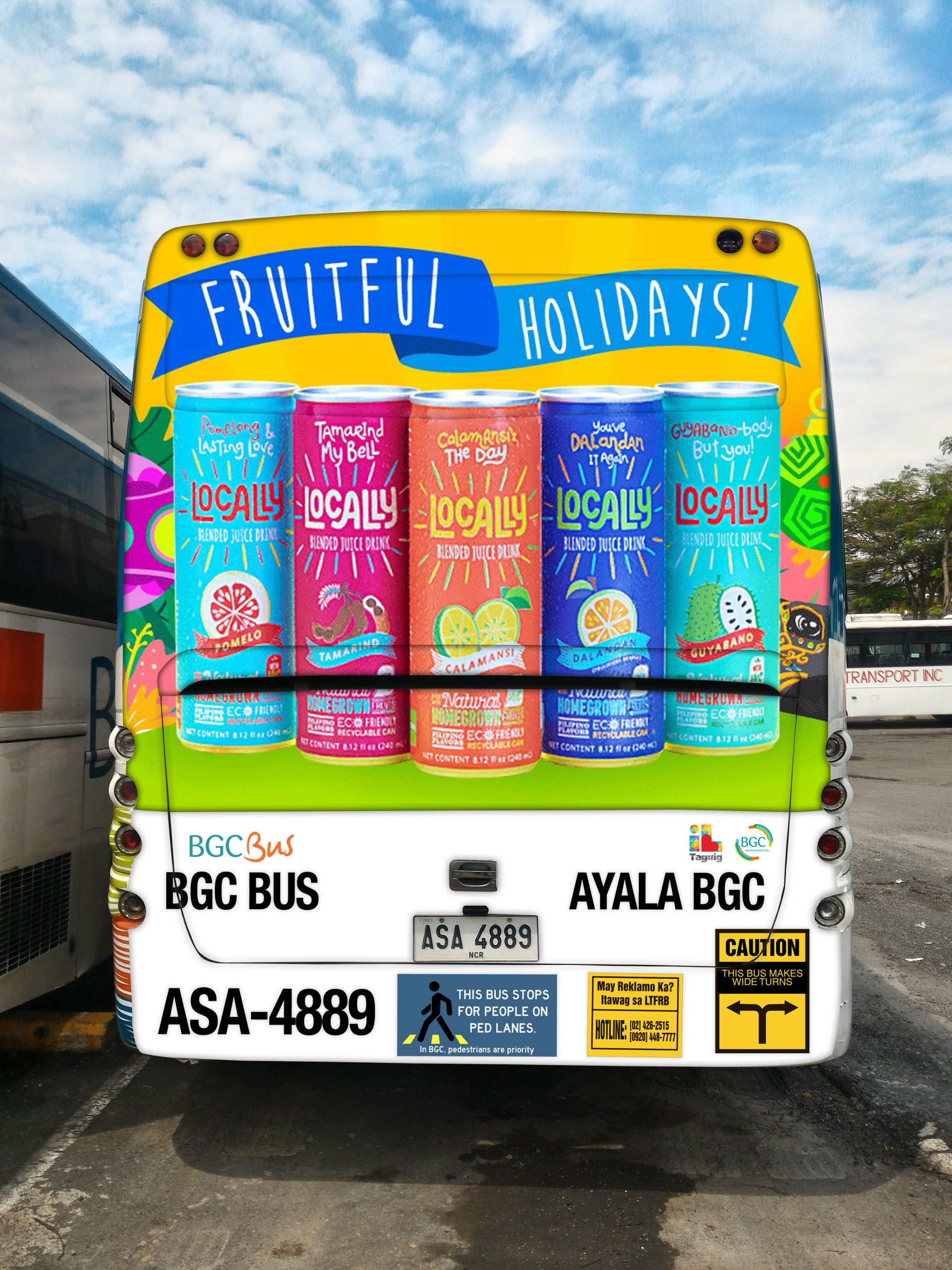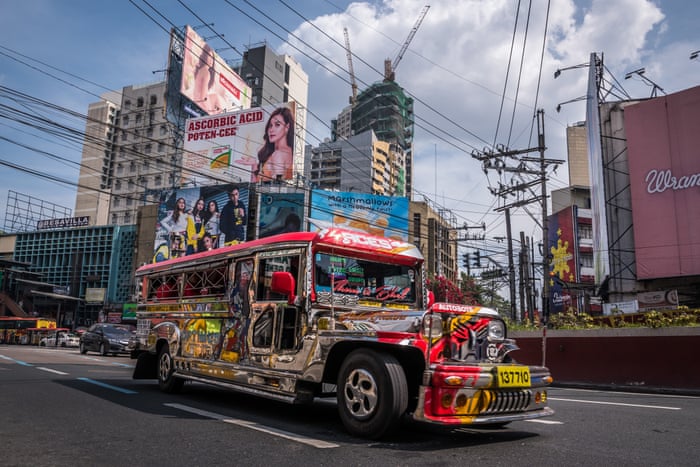Increase Your Business with Transit Advertising Philippines
Increase Your Business with Transit Advertising Philippines
Blog Article
An In-depth Assessment of the Strategies and Methods for Effective Transportation Advertising And Marketing Campaigns
Transit advertising projects use a special opportunity for brand names to involve with diverse target markets in dynamic environments. As we discover these important elements, it becomes clear that the path to an impactful transit advertising and marketing technique is both detailed and fulfilling, increasing the concern of exactly how best to navigate these intricacies for optimal brand name presence.
Recognizing Target Demographics
Comprehending target demographics is vital for the success of transit ad campaign (Transit Advertising Philippines). Identifying details target market sections allows marketers to customize their messages successfully, ensuring that the material reverberates with the designated visitors. This approach improves involvement and maximizes roi
To efficiently assess target demographics, marketing professionals must take into consideration several crucial factors, including age, earnings way of life, level, and occupation choices. As an example, a campaign targeted at young specialists might concentrate on convenience and modernity, while one targeting families might stress safety and reliability. Furthermore, geographical variables such as rural versus urban settings can significantly influence customer actions and preferences.
Data collection techniques such as surveys, emphasis teams, and social networks analytics provide important insights into market patterns and consumer routines. By leveraging this info, advertisers can craft compelling narratives that align with the values and needs of their target audience.
Inevitably, recognizing target demographics not just informs the strategic direction of transportation marketing projects however also guarantees that resources are alloted successfully. This targeted technique boosts the possibility of achieving project goals, fostering brand name loyalty, and driving conversions.
Creative Layout Methods
Effective interaction with target demographics counts greatly on ingenious creative design strategies en route ad campaign. To effectively catch interest in a congested aesthetic environment, developers must prioritize clearness and aesthetic influence. Using bold shades and high-contrast components can enhance visibility, making certain that messages are conveniently readable from a range.
Integrating dynamic imagery that reverberates with the target market is vital. Visual storytelling methods can stimulate feelings and create unforgettable organizations with the brand. Moreover, critical usage of typography aids communicate vital info promptly; legible fonts and proper dimensions further improve readability.
Incorporating interactive elements, such as QR codes or increased fact functions, can engage travelers past easy monitoring (Transit Advertising Philippines). These techniques not only promote individual interaction but additionally link the space in between typical marketing and electronic interaction
Additionally, using room creatively-- whether on bus covers, transportation shelters, or subway advertisements-- can bring about ingenious layouts that break the mold of standard marketing. By welcoming creative creativity while preserving brand name uniformity, campaigns can promote a solid link with their target market, eventually driving both understanding and action. The integration of these layout strategies is paramount for attaining effective transit marketing results.
Strategic Placement Techniques
Optimizing the influence of transit advertising hinges on tactical positioning approaches that guarantee optimal presence and interaction. Reliable placement involves understanding and analyzing high-traffic locations passenger demographics to recognize one of the most advantageous learn the facts here now places for advertisement display screens. As an example, placing advertisements near entries and leaves of transit lorries can catch the focus of boarding and alighting travelers, thus enhancing direct exposure.
Moreover, using both exterior and interior surface areas of transit lorries can substantially broaden reach. Outside advertisements, visible throughout commutes, involve pedestrians and other drivers, while indoor ads target passengers in a restricted environment. In addition, positioning advertisements en route centers, such as bus terminals or train stations, permits raised impressions as commuters change between different settings of transport.
Timing is also critical; straightening the project launch with peak travel durations makes best use of audience involvement - Transit Advertising Philippines. In addition, leveraging digital screens in transportation settings can promote vibrant content, improving and supplying real-time updates customer communication. By employing these calculated positioning methods, marketing professionals can guarantee that their transit advertising projects accomplish optimal visibility, resonate with the target audience, and ultimately drive desired outcomes

Measuring Campaign Efficiency
To analyze the success of transportation website here advertising and marketing campaigns, it is vital to utilize a range of dimension techniques that supply insights right into audience interaction and overall effectiveness. One main method is making use of key efficiency indicators (KPIs), such as reach, impressions, and engagement rates, which quantify the amount of individuals viewed the promotion and engaged with it.
Studies and emphasis teams can also be important in determining consumer perceptions and recall, permitting marketing professionals to comprehend the impact of their messaging. Additionally, tracking website web traffic and social networks engagement during and after the project helps gauge direct responses to the advertising and marketing.
One more effective strategy is using location-based analytics, which can provide data walking web traffic around particular transportation places, using insights into whether the campaign successfully caught the interest of commuters. Additionally, examining sales information can disclose relationships between transit marketing and enhanced income, supplying concrete evidence of a campaign's effectiveness.
Study of Success
Recognizing the efficiency of transit marketing campaign through measurement techniques lays the groundwork for checking out real-world instances that illustrate successful end results. One remarkable case research study involves a nationwide drink brand name that utilized bus wraps in urban areas. The campaign aimed to boost brand name presence and sales during the summer season. By utilizing geo-targeted electronic advertisements and analytics, the brand name gauged a 30% increase in sales in regions where the wraps were prominently displayed, demonstrating the straight effect of transportation marketing.
Another compelling example comes from a neighborhood nonprofit organization that introduced a project on metro platforms to promote an area occasion. The company incorporated vibrant visuals with QR codes guiding travelers to a registration page. Post-campaign analysis revealed a 50% Find Out More increase in event participation compared to the previous year. Making use of direct involvement via technology amplified the project's reach and performance.

Conclusion
In summary, successful transit marketing campaigns require a thorough method that incorporates an understanding of target demographics, cutting-edge design methods, and critical placement. Collectively, these approaches foster brand existence and make best use of the return on investment in transit marketing efforts.
Understanding target demographics is essential for the success of transit advertising projects.Reliable interaction with target demographics counts greatly on ingenious creative style methods in transit marketing campaigns. By employing these tactical placement methods, marketing experts can ensure that their transportation advertising and marketing projects accomplish optimal exposure, reverberate with the target audience, and inevitably drive desired outcomes.
Recognizing the effectiveness of transit marketing projects via measurement strategies lays the foundation for analyzing real-world instances that show effective outcomes.In recap, effective transportation marketing campaigns necessitate a detailed technique that incorporates an understanding of target demographics, cutting-edge layout methods, and calculated positioning.
Report this page